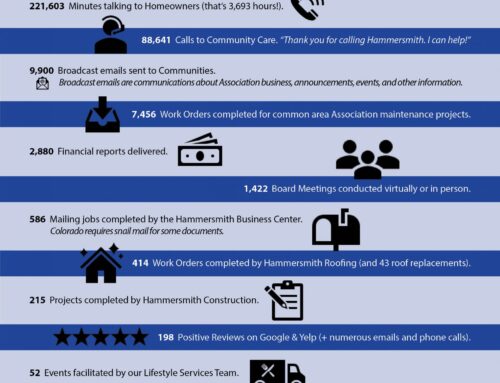When an Association’s Board of Directors begin exploring a new construction project, oftentimes the cost of the endeavor is at the forefront of their thought process. And rightly so; depending on the size and scope of the project, it could represent the biggest expense the Community has taken on in many years, and the biggest one it intends to incur for years to come. Therefore, Board members want to ensure that everything about the project goes smoothly, and that their Association’s money is well spent.
However, in their attempts to control costs, many Boards make a crucial oversight when it comes to undertaking construction projects: neglecting to hire an owner’s representative.
What is an owner’s rep?
An owner’s rep is a party that advocates on behalf of the client, which would be the Association’s Board of Directors in this case. They act as a liaison between the Board and the contractor assigned to do the job, and advise the Board on construction matters that are out of their scope of knowledge so they can make informed decisions. Essentially, it’s an outside consultant with expertise in construction that represents the interest of the Board.
Why are some Boards hesitant to hire an owner’s rep?
Some Boards may be hesitant to engage the services of an owner’s rep because they are concerned with the additional cost it adds to a project. This approach can be shortsighted, however, as cost overrun is always a concern with construction projects, and the risk of this increases with lack of oversight. And oftentimes, cost overruns can be so catastrophic that they inhibit the completion of the original project.
How can an owner’s rep help?
Some of the aspects of construction project management we’ve found that our Community Association clients struggle with most is the planning and sequencing process, as well as developing a scope of work. Without engaging an owner’s rep who knows the ins and outs of construction project management, it’s very difficult for Board members to know which order to complete different aspects of the project. This is especially true for projects that have a lot of variables.
For example: where should the staging of material be done and who pays for it? Should the contractor be responsible for daily cleaning of the job or is that the building’s responsibility? What is the emergency action plan if something catastrophic were to occur, and who should be called? Is it better and more cost-effective to have the contractor install components that will be funded by the HOA in the future (ie. a concrete slab for another project), as the contractor already has the concrete ordered for this project? Those are all questions that an owner’s rep can help answer, and it is that type of counsel that saves Associations time and money. Construction projects can be a hard puzzle to put together, which is why there are dedicated professionals who specialize in doing just that.
When should an owner’s rep be brought into the construction process?
Ideally, the Board of Directors should bring in an owner’s rep during the contracting stage. Many of the mistakes and issues that arise later in a construction project can be traced back to the contracting stage, so engaging their services before a contract is signed is crucial. Because once it’s signed, a construction contract is extremely difficult to unravel.
* * *
Hammersmith Construction Services was established in 2009 as part of the breadth of services offered by Hammersmith Management, Inc. Your Association can access the knowledge, experience and resources of Hammersmith Construction Services at no additional cost. Our Contractors provide their best prices for your projects, which in turn helps underwrite the cost for supporting this service for your Association. In the last six years, we have saved our clients more than $5,000,000 in project costs. Learn more at www.HammersmithConstruction.com






